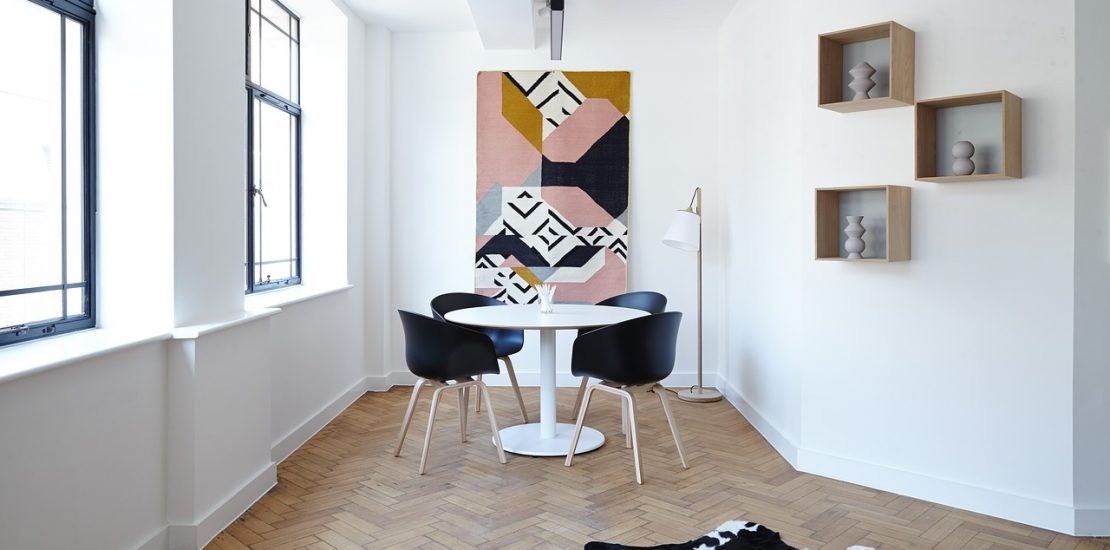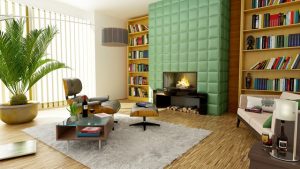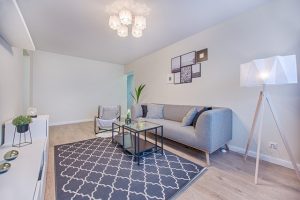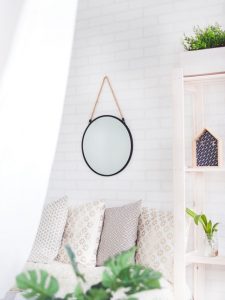Unless you describe yourself as an interior design aficionado, you’re probably not familiar with the subtle nuances that differentiate the most common interior design styles.
It’s obvious to most that a vintage living room is not the same as a minimalist one, but what about all those in-between styles that look minimal and yet don’t share any of the same colour schemes or accessories? They are all one and the same, right? Wrong!
We’ve put together this cheat sheet to help you quickly identify the most popular design styles, talk the talk to impress your friends, and more importantly, decide which one your next decorating project should adopt.
Modern versus Contemporary
People often confuse modern, contemporary and minimalism because it’s hard to tell the difference to the untrained eye.
In fact, there are many ways to distinguish, some more subtle than others, but what you have to remember is that, while modern and contemporary may be interchangeable in the dictionary, they are worlds apart in interior design circles.
MODERN
IN ESSENCE
Modern came about in the 20th century and is a rebellion against the ostentatious norms of previous centuries. Modern signals a return to nature but also simplicity, practicality and innovation, being heavily shaped by German and Scandinavian architectural trends. Think Le Corbusier for a point of reference. Modernism boasts no unnecessary adornment and is experiencing something of a resurgence in the US at the moment.
FURNITURE
No cosy couches that swallow you up into a cloud. Modern furniture with its hard surfaces can seem rather cold to those of us who like sitting in a snug wrapped up in blankets. Instead, furniture has flatter cushions and is often made of leather. Think Wassily chairs, Barcelona chairs, Bauhaus inspired items, leather sofas, glass-topped tables, lacquered wood drawers and finishes, metallic light fixtures and even wooden ceilings.
COLOURS
Colours follow a neutral, earthy theme: browns, whites, whites and beige.
MATERIALS
Fans of modernism will embrace native elements in the space, such as naked beams and exposed concrete. Surfaces tend to be shiny, inviting glass and chrome fixtures as a nod to the new century and ensuing innovation. Wood, leather and lacquered veneers.
ACCESSORIES
Accessories tend to be chrome, shiny and very practical. As modernism eschews all elements of fuss and ornamentation, clean lines are favoured over frills and curves, so no cushions.
PHILOSOPHY
Modern’s main philosophy can be summarised in three words: “form follows function”. This means that beauty is secondary to the purpose of the furniture item.
CONTEMPORARY
IN ESSENCE
Where modern is a misnomer, relating to a certain period in the early to mid 20th century, contemporary is relative to the time we are in. That means it’s forever evolving depending on the tastes, trends and innovations of our current designers. So while minimalist décor may feel very contemporary today, tomorrow, we could be hailing something more vintage and cosy as our contemporary look and feel. Contemporary interiors can be both ornamental and practical and certainly a lot less austere. A varied colour palette is also permissible.
FURNITURE
Today’s contemporary styles draw inspiration from art deco design with geometric patterns and lines including curves. Space is also a feature to foreground more colourful features and textures.
COLOURS
Like modernism, contemporary favours neutrals, but with a more dramatic departure. Black and white are staples and bright accents make their mark borrowing from art deco vibrancy.
MATERIALS
Fabrics are more of a feature in current contemporary design compared to modernism, with texture being dominant. Fabrics such as wool, jute and linen make an appearance to soften up the space. Tiled and hard floors interspersed with rugs is the perfect balance for underfoot.
ACCESSORIES
While furniture has to be bold, accessories tend to be minimal fuss, for example, furniture legs tend to be visible, not obscured by skirts on beds. Unlike modernism, contemporary makes way for non-natural light in various forms such as track lighting, cove lighting and even spotlights on artworks. This creates pools of light to step away from the harshness we tend to associate with full overhead lighting. Other accessories could be painted frames in a bold colour, plinths with ornamental sculptures and metal accents.
PHILOSOPHY
Beauty and practicality have equal weight. Contemporary takes influences from other styles to create a less strict home décor that looks more individual while still being on trend.
SCANDINAVIAN
IN ESSENCE
Scandinavian has reached new heights of popularity in recent years with books on Danish philosophy adorning the shelves of every Smiths in every train station you go past. Whether it’s hygge, lagom or sisu or just their six-hour working day, we can all agree our northern neighbours are onto something good. We’ve loved Scandi design for so long, but what is it really? And how is it different from other minimalist trends? It’s simplicity and functionality, influenced by Bauhaus.
Scandinavian design really gained traction in the mid-20th century when it caught Elizabeth Gordon’s attention, who was the incumbent editor of House Beautiful. Scandinavian home décor endeavours to be sustainable, which led to its resurgence in popularity in the 90s.
FURNITURE
Furniture tends to follow lines, straight or slightly rounded and more often than not, thin exposed furniture legs are prominent. Lamps are hugely popular, with Scandinavian designers such as Poul Henningsen and Louis Poulsen having opened the way in lighting design. Upholstered, blonde or bleached wood has proven essential.
COLOURS
Scandinavian isn’t one for outlandish colour palettes, boasting mainly neutrals and natural colour. A light backdrop serves to create natural pools of light helped along by the Scandinavian love of lamps. Pops of red, blues, greens or beiges stand out as accents.
Floral and stencilled patterns may emerge on walls, particularly around doors, to create impact.
MATERIALS
Besides the penchant for light-coloured woods with fabric cushioning, other materials such as stone are favourable such as wool, mohair, sheepskin, burlap and jute.
ACCESSORIES
Light is its epicentre, with lamps to create spots of light in various points within the space. Candles still find a place in the home for night-time cosiness. Mirrors come into play to reflect back even more light and flowers and florals including wreaths play on the natural theme.
The ultimate in minimalist movements, Scandi eschews all clutter, yet doesn’t disregard all detailing such as carved wood and cosy rugs.
PHILOSOPHY
Scandinavian home décor is simplicity with a valid philosophy at its root. Similar to modernism, it is a departure from the opulence of the 19th century, but it goes beyond that. It is about democratising home décor so whatever your income, you can live in comfortable and beautiful surroundings that prioritises quality living over materialism.
How do you achieve a clutter-free space for a home you can relax in? Rent A Space Self Storage has a range of storage units to help you remove stress from your surroundings. Review our size guide for all your options.




